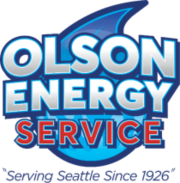-
What Homeowners Need to Know About Geothermal Heat Pumps
If you’re looking to keep your energy costs down in your household this year, you may want to think about installing a heat pump . Obtaining a home energy audit from an HVAC contractor in Seattle can help you determine whether this is a worthwhile investment for you. Geothermal heat pumps are a popular option for cold climates. If you’re interested in learning how these devices work, keep reading.
What are geothermal heat pumps?
A heat pump is a heating system that works by transferring heat out of one space and into another—for example, from the air outside your home to the air inside. Geothermal heat pumps work by transferring heat to or from an area a few feet under the ground, which stays at a steady temperature throughout the year. As with other heat pumps, these systems can be used to either heat or cool the air inside your home, and they can also be used to heat water.
What are the different types of geothermal heat pumps?
There are two distinct types of geothermal heat pumps used in homes: Closed loop and open loop systems. Open loop systems rely on groundwater to exchange heat, while closed loop systems can use either vertical or horizontal installations or rely on a nearby lake or pond for heat exchanges. When you talk to a contractor about installing your heat pump, he or she will inspect your property and advise you which option is best suited to your needs.
What are the advantages of geothermal heat pumps?
Since the temperature of the ground doesn’t change from one season to the next, geothermal heat pumps are much more efficient than heat pumps that rely on air. They are highly eco-friendly, since they don’t produce any emissions or have any noticeable impact on the environment. Geothermal heat pumps also require little maintenance once they’ve been installed, and they are quiet and unobtrusive.
““
-
Strategies for Improving Your Indoor Air Quality
Most people spend most of their time indoors, which means that the air they’re most exposed to is the air inside their homes. That means that the quality of your indoor air can have a significant impact on your life. Acting to improve your indoor air quality can make your Seattle home a safer and healthier place for you and your family. Here are some of the steps you can take to make your household air cleaner:
Invest in an Air Cleaner
Air cleaners—or air purifiers—are devices that are designed to remove contaminants such as dust and pollen from the air. If you can’t seem to keep allergens out of your home, an air cleaner may be a smart investment for you. It’s important to keep in mind, however, that air cleaners work best if you are already using other ways to minimize the number of pollutants in your household air.
Have Your Ducts Cleaned
If you don’t have them cleaned out from time to time, your HVAC system’s air ducts can harbor dust, pollen, mold, pet dander, dust mites, and other contaminants. When you run your furnace or air conditioner, these pollutants are spread throughout your entire home. If you suffer from allergies, this can make them worse. Having your ducts cleaned by a professional can help to ensure that your indoor air stays clean and breathable.
Call for Regular HVAC Service
When you use your furnace or air conditioner frequently, the various components of your HVAC system can get dirty and moldy—which will not only impact your air quality, but can also cause your system to break down. To reduce your need for repairs and maintain high-quality air inside your home, you should have your system inspected, cleaned, and serviced by an HVAC professional on a regular basis.
-
3 Simple Ways to Make Your HVAC More Energy-Efficient
Have you ever stopped to wonder just how much energy you use heating and cooling your Seattle home every month? In fact, according to the U.S. Department of Energy , nearly half of all of the energy you pay for in your household goes toward running your heating, ventilation, and air conditioning . This means that making your heating and cooling systems run more efficiently can help you both reduce your household’s environmental impact and keep your energy expenses down. Here are some simple steps you can take for a more energy-efficient HVAC system:
Buy a programmable thermostat.
Purchasing and installing a programmable thermostat is a great way to rein in your energy usage at home. Programmable thermostats let you schedule different settings throughout the day, ensuring that you aren’t needlessly running your HVAC system late at night, or when nobody is home. The latest programmable thermostats even allow you to adjust them remotely using Wi-Fi.
Change out your air filter.
When your air filter gets clogged up with a lot of dirt and debris, it means that your HVAC system won’t be running as efficiently. Fortunately, you can forestall that problem by making sure to change out your old air filter for a new one once every month or so. The more heavily you’re relying on your air conditioning or furnace, the more frequently you will want to change your filter.
Upgrade your entire HVAC system.
The older your air conditioner or furnace is, the more inefficient it is likely to be. As time goes on, this can turn into an expensive problem. One of the best ways to reduce your energy usage is to replace your old HVAC system with a newer, more energy-efficient one. Make sure that any new HVAC equipment you buy has been certified by Energy Star, which signifies that they are among the most energy-efficient products available.
-
Ductless Heat Pumps 101
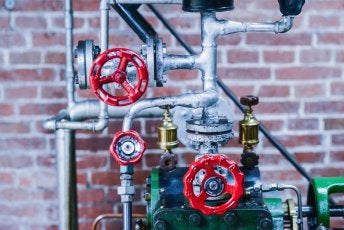
Ductless systems are fast becoming one of the most popular methods of heating and cooling modern homes, and it’s not hard to see why. Compared to traditional central HVAC systems, ductless heating and cooling systems are versatile, efficient, and cost-effective. If you’re considering adding a ductless heat pump to your Seattle home, here’s what you should know.
Ductless systems are effective heaters.
A ductless heat pump works by using a system not unlike the one that powers your refrigerator. The pump uses a compressor to transfer heat from outside into your living space, where the degree of heat you get can be controlled using a remote control. It’s a simple process that results in reliable, consistent heating. Ductless heat pumps are extremely quiet to operate, and they are also much less expensive to use than furnaces.
Ductless systems are highly efficient.
If you’re looking to cut back on your energy usage, a ductless system is a great option for home heating. With a ductless heat pump, you can heat every space by only as much as it needs and avoid unnecessary energy use. HVAC systems with ducts also tend to lose a lot of heat during the process of distributing it throughout your home, which isn’t an issue with a ductless system.
Ductless systems can be used anywhere.
One of the chief advantages of ductless heat pumps is their sheer versatility—they can be used to heat virtually any type of home space, whatever its size. Unlike other heating systems, they don’t require you to install any pipes or other room additions. If you’re ready to retire your outdated, inefficient central heating system, a ductless heat pump is a terrific option. You can also use ductless heat pumps to complement your existing system if you have a space that you’re having trouble heating.
-
Could You Benefit from a Fireplace Insert?
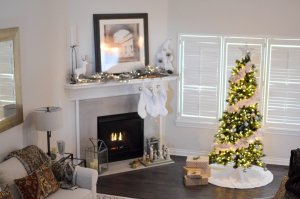
A fireplace can make a wonderful addition to your Seattle home, but there are some notable drawbacks to a conventional fireplace that might give you pause. Fireplaces are notoriously wasteful, as most of the heat they generate is lost through the chimney. They can also be cumbersome and expensive to operate, which means that many homeowners don’t end up actually using their fireplaces as often as they had expected. They also require a great deal of maintenance and regular cleaning.
If you want to be able to enjoy the warmth and comfort of a traditional fireplace without any of the associated mess, expense, and inefficiency, you may want to think about a fireplace insert . Fireplace inserts are highly efficient, so they allow you to enjoy the heat they produce. They are easy to operate, and they can also be stylish and aesthetically appealing, making them an especially attractive option for today’s homeowners.
-
An Inside Look at Geothermal Heat Pumps
As the world continues shifting toward more sustainable and efficient energy sources, heating and cooling options have expanded to include geothermal heating and cooling. This technology harnesses the earth’s heat energy to keep homes and businesses comfortable all year round. Explore the ins and outs of geothermal heating, the mechanisms behind geothermal heat pumps, their benefits, and other considerations.
What is Geothermal Heating?
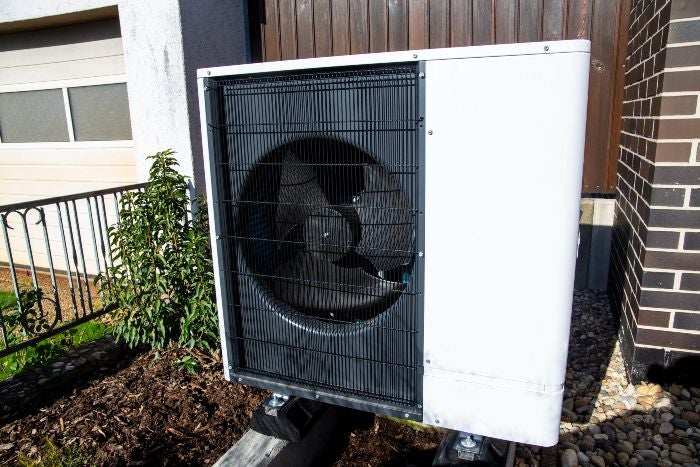
Geothermal heating is an energy-efficient climate control method that taps into the constant thermal energy stored beneath the earth’s surface. This form of heating is seen as a green alternative to traditional methods because it substantially reduces the reliance on fossil fuels and decreases greenhouse gas emissions.
While the ground near the surface fluctuates almost as much as the air temperature, the soil below the frost line maintains a steady temperature of 45 to 75 degrees. This heat source remains consistent despite seasonal changes, making it a reliable option for both heating and cooling.How Do Geothermal Heat Pumps Work?
Are you familiar with air-source heat pumps? These AC-like systems move heat between the indoor and outdoor air for high-efficiency heating and cooling. Geothermal or ground-source heat pumps are similar, but they exchange heat between the earth and the buildings they serve.
A series of underground pipes, known as a ground loop, comprises the heart of geothermal heating and cooling. Ground loop systems come in two forms: open loop and closed loop. Open loop systems utilize well water, a pond, or a lake for direct heat exchange. In this case, the ground loop is filled with water.
Closed loop systems absorb or disperse heat directly to the earth, offering versatility and environmental safety but requiring a larger installation area. In this case, the ground loop contains a mixture of water and antifreeze as the heat-transfer fluid.
In heating mode, the fluid circulating through the pipes absorbs heat from the ground and carries it to the heat pump unit. There, the heat is concentrated and transferred to the air circulating through the building’s ductwork, thus heating the interior.
During the cooling process, the heat pump absorbs heat from the indoor air and transfers it into the ground via the loop system, thereby cooling the building. Transitioning between heating and cooling modes is seamless and can be controlled at the thermostat.
Pros and Cons of Geothermal Heat Pumps
Like all heating and cooling systems, geothermal heat pumps have benefits and challenges. Here’s a breakdown of each:
Pros
- Energy efficiency: Geothermal heat pumps are incredibly efficient. They can deliver three to five units of heat for every unit of electricity they use, making them 300 to 500 percent efficient. This incredible performance is possible because the heat pump transfers heat rather than creating it, a critical difference from conventional heating systems.
- Cost savings: Higher efficiency amounts to significant utility savings over the long term, making geothermal heat pumps a cost-effective investment.
- Environmental benefits: By leveraging renewable energy from the earth, these systems reduce dependence on fossil fuels and produce fewer greenhouse gas emissions.
- Durability and reliability: Geothermal systems have few moving parts, leading to a longer lifespan and lower maintenance needs than conventional systems. The indoor components typically last about 25 years, and the ground loop can last over 50 years.
Cons
- High initial investment: Geothermal heat pumps cost significantly more than traditional HVAC systems, largely due to the ground loop portion. However, federal, state, and local incentives help offset the upfront cost.
- Site-specific considerations: Installation is challenging, sometimes impossible, on smaller properties or areas with difficult ground conditions. A thorough site evaluation is essential before installation.
- Electricity use: While efficient, geothermal systems still run on electricity, so they aren’t carbon neutral unless powered by renewably sourced electricity.
- Professional installation and maintenance required: Due to their complexity, geothermal systems must be professionally installed and maintained. And since geothermal heat pumps are less common, finding a qualified installer may be difficult.
Trust Olson Energy Service for Your Geothermal Needs
With nearly a century of service in the Seattle area, Olson Energy Service takes pride in delivering energy-efficient heating and cooling solutions to our customers. Our mission has always been centered on serving the community with integrity and expertise. We’ll work hard to provide a system that meets your unique needs, enhances comfort, and contributes to a healthier planet. If you’re considering the switch to a geothermal heat pump or need other HVAC services in Seattle, WA, please contact us online or call us at 206.782.5522 to speak with a friendly representative today.
-
Start a Bidding War for Your Home with a New Fireplace Insert
If you want to enhance the value of your Seattle home before you sell it, one of the smartest things you can do is to add a fireplace insert . Fireplace inserts have many advantages over traditional fireplaces that can make them irresistible for home buyers. Unlike fireplaces, fireplace inserts are energy-efficient and won’t contribute to heat loss through the chimney. Fireplace inserts are simple and easy to use, and you can switch them on and off whenever you feel like enjoying the warmth of a fire. They are also stylish and trendy, making them a terrific choice if you want to give your home a more up-to-date look and feel. When you want the benefits of a fireplace without any of the drawbacks, a fireplace insert is an excellent investment. Once you’ve converted your old-fashioned fireplace into a setting for your fireplace insert, you may be surprised how much more appealing your home looks to potential buyers.
-
Take care of your air conditioner during the winter
Steps to Get Your AC Unit Ready for Winter
As winter’s chill fades away and a new season emerges, it’s time to put your air conditioner back into action. Be prepared to give your HVAC system some attention this spring to ensure smooth operation all summer long. After all, air conditioning unit cost is a substantial investment, and maintaining it properly increases its lifespan and efficiency. Here are 10 steps to get your AC unit ready for spring and summer.
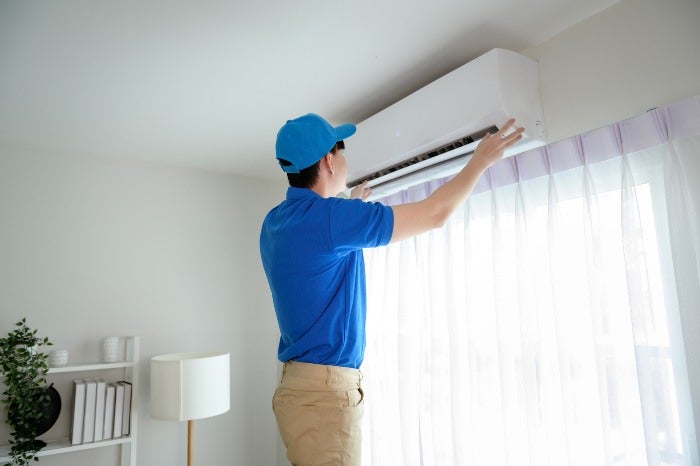
1. Remove the AC Cover if You Used One
Start by removing any covers or plywood boards you installed last fall to protect the outdoor AC unit from harsh winter weather. These keep snow and ice out, but turning the system on while covered could cause irreversible damage, so don’t forget this step.
2. Restore Power to Your Air Conditioner
If you turned off the power to prevent accidentally running your AC during the winter, it’s safe to restore power now that you have removed the cover. Depending on how you shut it off last winter, you’ll need to flip the wall switch near the condensing unit or restore power to the circuit breaker at the main electrical panel.
3. Clear the Area Around the Condensing Unit
The outdoor condensing unit releases the heat absorbed from your home’s interior, making it a fundamental part of the air conditioning process. To work efficiently, the condensing unit needs room to “breathe.” So clear the area around it of dead leaves, twigs, or other debris that may have collected over the winter months. Also, assess the surrounding vegetation now and throughout the summer, trimming it regularly to keep it at least 12 to 24 inches away from the unit.
4. Check for Damage
Condensing units are robust, but harsh winter weather may take its toll. Look for rust, dents, or other physical damage to the unit. Then, check the insulation wrapped around the copper piping leading from the unit through the wall. If it appears damaged, replace it before the cooling season starts in earnest.
5. Clean the Condensing Unit
On a relatively warm day, spray down the unit with your garden hose to wash away cobwebs, dirt, and other debris stuck to the metal fins. While you’re at it, straighten any bent fins with a fin comb or a butter knife. These fins facilitate heat transfer, so clearing away debris and making sure they’re straight boosts performance and lowers your energy costs.
6. Replace the Air Filter
Step back inside your home now and locate the HVAC air filter, which should be near the indoor AC unit and blower motor. When the filter becomes clogged, your air conditioner must work harder to push air through. A simple yet effective way to maintain your unit’s efficiency is to replace the filter at the onset of spring and every one to three months throughout the rest of the year.
7. Clean the Air Vents
Dust and debris on your return and supply registers can enter your HVAC system, restricting airflow and affecting indoor air quality. Use the brush attachment on your vacuum cleaner to dust the grilles and louvers. Then, ensure all your vents are open and unobstructed for the best airflow and system balance.
8. Adjust the Thermostat Settings
Switch your thermostat from heating to cooling mode and set the temperature to a comfortable level for the season. The Department of Energy (DOE) recommends setting the temperature to 78 degrees while you’re home and 85 to 88 degrees when you’re away for more than eight hours. If you have a programmable thermostat, this is a good time to revisit your settings, adapting them to your spring schedule for maximum energy savings and comfort.
9. Test the AC While the Weather is Still Mild
It’s wise to test your air conditioner before winter’s chill fades completely. This way, you have time to identify and fix any issues before you start relying heavily on your AC for indoor comfort.
10. Schedule Annual Maintenance
The final step is to schedule professional air conditioning maintenance. A trained technician will perform comprehensive checks, performing tasks beyond what a homeowner can do, such as measuring the refrigerant charge, testing for and fixing leaks, cleaning the indoor evaporator coil, and running a safety test. Regular maintenance helps prevent unexpected breakdowns, extends the life of your air conditioning unit, and boosts efficiency.
As one of Seattle’s most trusted HVAC contractors, Olson Energy Service is here to serve you. Our family-owned and operated business dates back to 1926, a testament to our legacy and commitment to customer service. During your AC maintenance visit, we’ll check all system components, diagnose underlying issues, and answer any questions you have, ensuring your air conditioner is ready to deliver comfortable, cool air all spring and summer long. To schedule your next visit with us, please call 206.782.5522 or contact us online today.
-
How Does Winter Affect Indoor Air Quality?
If you’re like most Seattle residents, winter makes you turn up the thermostat, dress in warm clothes, and reach for that extra blanket. But there’s one effect of winter that you may not have considered before—its impact on your indoor air quality . You might be surprised to learn that the cold season affects your household’s air at all, but it does. These are some of the ways in which winter weather influences the quality of your air:
More insulation means more contaminants
Most of us are more likely to notice drafts when it’s cold out, which means we’re more likely to have professional insulation installed. What you may not realize is that making it harder for warm air to escape your home also means that contaminants such as mold and bacteria are trapped inside. As a result, your indoor air quality can decrease drastically after you have your house reinsulated.
A dirty furnace can contribute to poor air quality
When you use your furnace frequently, dust, dirt, and other pollutants can get clogged in the vents. One of the best ways to ensure that your furnace continues to work efficiently—and that your air stays clean—is to change out your air filters once every 90 days or so. If you use your furnace constantly, you may want to change the filter even more frequently.
Pre-winter furnace inspections are a must
It’s important to remember that simply changing your air filters won’t keep your entire furnace clean. Having your HVAC system inspected by a professional before the start of the winter season is a good way to guarantee that your furnace is clean and that all its components are fully functional. A pre-winter furnace inspection will provide you with the assurance that you won’t have to deal with poor indoor air—not to mention a malfunctioning furnace—when the weather is cold.
-
Here’s What the Technician Checks During an Annual Furnace Inspection
The Seattle weather’s turning cold and you know what that means—it’s time to call for your annual pre-winter furnace inspection . Having your furnace checked and cleaned every year by an HVAC professional is a must if you want to guard against any midwinter breakdowns. You may be wondering, however, just what a furnace inspection entails. How essential is it? These are some of the tasks that happen during a typical furnace inspection:
Check the Wiring
If your furnace’s wiring needs to be replaced, it’s better to know that before the winter, when you’ll probably be running it regularly. An inspector can check all the wiring in your furnace and replace any of it that has become corroded or worn-out. This isn’t just important to keep your furnace running—it can also help to prevent fires.
Inspect the Vents
Without clear vents, your furnace won’t be able to keep your home comfortable when the temperature falls. In addition to making sure that there are no blocks or leaks inside your vents, an inspector can clean them out to help ensure that your indoor air stays clean and fresh. Your grills and louvers will also be checked during the inspection.
Check the Heat Exchanger
The heat exchanger is perhaps the single most important component of your heating system—after all, it’s where the air that circulates through your furnace is heated. An inspector will examine your heat exchanger to make sure that it is still in good condition, and that it hasn’t become rusted or corroded over time.
Inspect the Drainage System
Your furnace also needs a working drainage system to continue to provide you with great service. When an HVAC professional looks at your drainage system, he or she will check all the hoses, clean out the condensate drain, and replace the water in the trap.
““
RECENT POSTS
categories
- Uncategorized
- Air Conditioner
- Fireplace Inserts
- Fireplace Insert Installation
- Air Conditioning Installations
- Air Conditioning Units
- Air Conditioner Maintenance
- HVAC Professionals
- Heat Pump Installation
- Heating and Cooling
- HVAC Unit
- Heat Pumps
- Furnace
- Furnace Service
- Tankless Water Heaters
- Water Heaters
- Energy Efficiency
- HVAC Contractors
- Olson Energy Service
- Mini-Split Systems
- Ductless Air Conditioner
- Residential Services
- Seasonal Boiler Maintenance
- HVAC Maintainance
